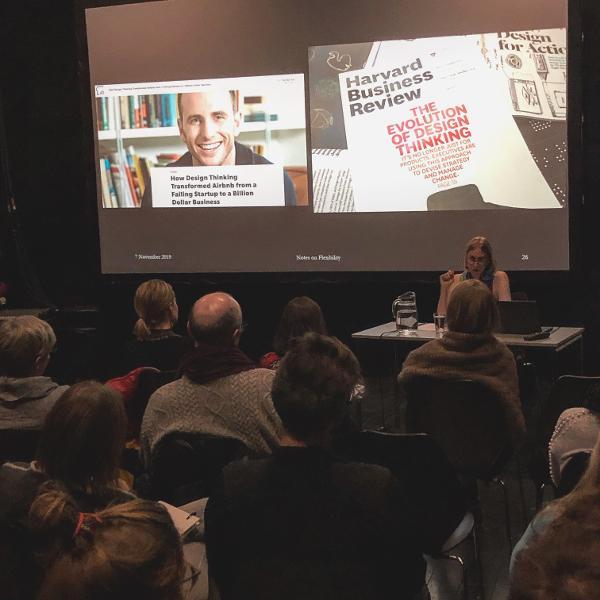Throughout the 20th Century, the notion of flexibility has been widely celebrated by radical artists, systems theorists, architects and interior designers, business managers, and yoga teachers. In the 1960s, radical artists operationalized the notion of flexibility as a mode of capitalist critique – an antidote to rigid modernist hierarchies. Yet at the same time, interior architects started to design open-space offices that could fit into a more drifting, or nomadic, working lifestyle. Today, numerous articles and blogs on business management affirm that “flexibility is the key to success.”
The talk discussed the material and ontological implications of five instances of flexibility: inflatable artworks, plastics, air condition, design thinking, and the Norwegian artist Marte Eknæs’ sculpture Air Body (2019) on display at Kunsthall Stavanger. The first four cases show how the notion flexibility has altered from being a powerful tool of critique to be absorbed by the condition it attacks. Yet, the last case, Air Body by Eknæs, points to a different realm of flexibility, where “flexibility is not the key to success.”
Ingrid Halland is an architecture and design historian and art critic currently based in Oslo/Trondheim, Norway. She is associate professor at the Department of Art and Media Studies, Norwegian University of Science and Technology (NTNU) where she teaches contemporary art theory, politics of aesthetics, and art historiography. She also holds the position as associate professor II at The Oslo School of Architecture and Design where she teaches at the PhD programme. She holds a doctorate in art history from the University of Oslo with a focus on postmodern architecture and design. In both her research and her critical practice Halland addresses problems closely associated with art theory, the history of ideas, aesthetics, and continental philosophy.
